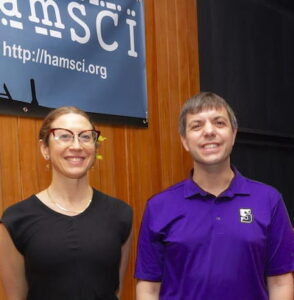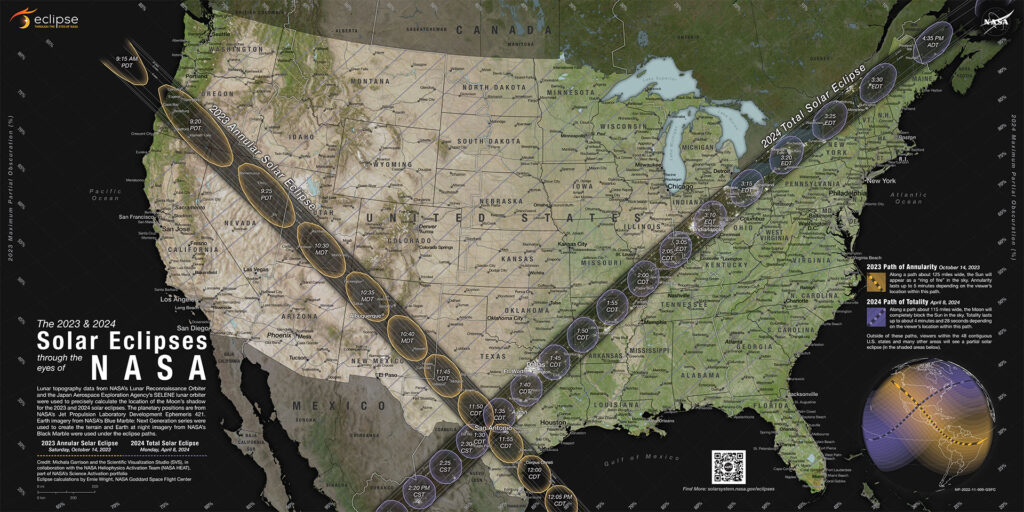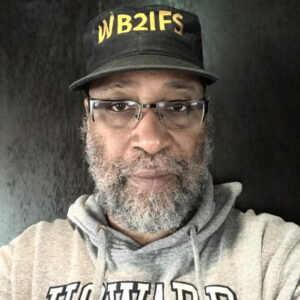Curiosity and Experimentalism on Display at 2023 HamSCI Workshop
At ARDC, two of our top values are curiosity and experimentalism. We actively look for opportunities to learn something new–particularly from our grantees and community members–and we encourage our staff, volunteers, and grantees to try new things and take risks. When we do learn something new, or a risk taken pays off, we like to share that information to support future experimentation and learning opportunities.
 One of the ways that we do this is by sponsoring amateur radio and related conferences that advance the state of the art in amateur radio and digital communications. Last year, we sponsored the TAPR/ARRL Digital Communications Conference (DCC) and the GNU Radio Conference. On March 17-18, 2023, we sponsored the 2023 HamSCI Workshop at the University of Scranton, Scranton, PA.
One of the ways that we do this is by sponsoring amateur radio and related conferences that advance the state of the art in amateur radio and digital communications. Last year, we sponsored the TAPR/ARRL Digital Communications Conference (DCC) and the GNU Radio Conference. On March 17-18, 2023, we sponsored the 2023 HamSCI Workshop at the University of Scranton, Scranton, PA.
HamSCI, or Ham Radio Science Citizen Investigation, is a group that has three main goals:
- Advance scientific research and understanding through amateur radio activities.
- Encourage the development of new technologies to support this research.
- Provide educational opportunities for the amateur community and the general public.

Rosy Schechter, KJ7RYV, ARDC Executive Director and Dr. Nathaniel Frissel at the 2023 HamSCI Workshop in Scranton, PA.
HamSCI was started by ham scientists who study upper atmospheric and space physics. Led by Dr. Nathaniel Frissel of the University of Scranton, these scientists recognized that projects such as the Reverse Beacon Network, WSPRNet, PSKReporter, DX Cluster, and ClubLog are generating big data sets that could provide useful observations of the Earth’s ionosphere and related systems. Using these resources, scientists are hoping to find answers to how the ionosphere responds to inputs from space and from the neutral atmosphere, what causes Sporadic E propagation, and other interesting questions.
You didn’t have to go far to see curiosity and experimentalism at the Workshop. There were papers and presentations on a wide variety of topics, including:
- How HamSCI will use TAPR’s Tangerine SDR, the Grape2 data collection engine, and the Ground Magnetometer in a Personal Space Weather Station.
- Using amateur radio spot data to study the climatology of traveling ionospheric disturbances (TIDS).
- Tracking traveling ionospheric disturbances by measuring the Doppler shifts of AM broadcast stations.
- Making VLF measurements with an inexpensive, homebrew VLF receiver system.
Heliophysics is having a year
There was also quite a bit of excitement over what’s being dubbed the Heliophysics Big Year. As described by NASA scientist Dr. Esayas Schume on Saturday morning, the Heliophysics Big Year includes two solar eclipses at a time when solar activity is approaching its max. The first solar eclipse–an annular eclipse–will take place on October 14, 2023 and be visible along a line from the Pacific Northwest to just north of the Texas-Mexico border. The second eclipse, which will occur on April 8, 2024, will be a total eclipse that will follow a line from southern Texas to Maine. See the map below to see exactly where these eclipses will be visible.

During the Heliophysics Big Year two eclipses will cross the United States: an annual eclipse on October 14, 2023 and a total eclipse on April 8, 2024.
HamSCI has its own name for the Heliophysics Big Year: Festivals of Eclipse Ionospheric Science (FoEIS). The Festivals will consist of multiple events, each with a goal of increasing our understanding of how the Sun, Earth, and ionosphere work together. Participants will include amateur radio operators, short wave listeners and science researchers from multiple US universities.
HamSCI FoEIS events will include another Solar Eclipse QSO Party (SEQP) and the Gladstone Signal Spotting Challenge (GSSC). The purpose of the GSSC is to collect propagation data by combining QSO data from WSPRNet, PSKReporter, and Reverse Beacon Network, along with participants’ event logs before, during, and after the eclipse. In addition to these events, hams will be measuring the Doppler shifts of WWV and CHU signals using the Grape 2 Low-IF Receiver, tracking traveling ionospheric disturbances by measuring the Doppler shifts of AM broadcast stations, and recording VLF signals.
ARDC in the House
ARDC sent three staff members to the event: Executive Director Rosy Schechter KJ7RYV, Outreach Manager John Hays K7VE, and Communications Manager Dan Romanchik KB6NU. In addition, several of our grantees either presented papers or were part of presentations at the conference:
- The very first presentation on Friday discussed how the TAPR TangerineSDR is being used in HamSCI. TAPR has received several ARDC grants for various aspects of the Tangerine SDR project. The last one included funding for Advanced Data Engine (DE-MK-II) design support, development tools, and the MagnetoPiHat magnetometer build.
 On Saturday morning, Jesse Alexander, WB2IFS, gave a presentation on the National Radio Astronomy Observatory’s Exploring the Electromagnetic Spectrum program. The goal of this two-year project is to engage a new generation of students in hands-on activities that will deepen their knowledge of the electromagnetic spectrum and help them obtain their Technician and General Class amateur radio licenses. A $315,000 ARDC grant is making this program possible.
On Saturday morning, Jesse Alexander, WB2IFS, gave a presentation on the National Radio Astronomy Observatory’s Exploring the Electromagnetic Spectrum program. The goal of this two-year project is to engage a new generation of students in hands-on activities that will deepen their knowledge of the electromagnetic spectrum and help them obtain their Technician and General Class amateur radio licenses. A $315,000 ARDC grant is making this program possible.- A poster describing upgrades to W3USR, the University of Scranton’s amateur radio station, was presented at the conference. Featuring a 40-ft. tower on top of the Loyola Science Center, a Yagi antenna for 20 meters, 15 meters, and 10 meters, and an Icom IC-7610 transceiver, the station will participate in many HamSCI projects. A $167,000 ARDC grant was awarded to the university for this station.
- Although the M17 Project was not presenting at this conference, Dr. Anthony Kapolka of Wilkes University showed how he was using the M17 protocol to teach undergraduate students about computer networking. One of the reasons he used M17 is that the code is all open source and could, therefore, be easily read and modified by the students. The M17 project received a $229,000 ARDC grant in September 2022.
HamSCI 2023 was a great experience for presenters and attendees, and in many ways the Workshop met the expectations set forth for amateur radio in Part §97.1 (b) of the amateur radio regulations. It certainly did prove our “ability to contribute to the advancement of the radio art.” Kudos to Dr. Nathaniel Frissel and the rest of the HamSCI team for putting on such a great conference.
Next year’s conference will be held at Case Western Reserve University in March 2024, just before the Heliophysics Big Year total eclipse. Watch the HamSCI website for more information as it becomes available. You can also join the HamSCI Google Group to receive information on HamSCI and discover how to participate. For other ways to participate in HamSCI, go to the Get Involved page.